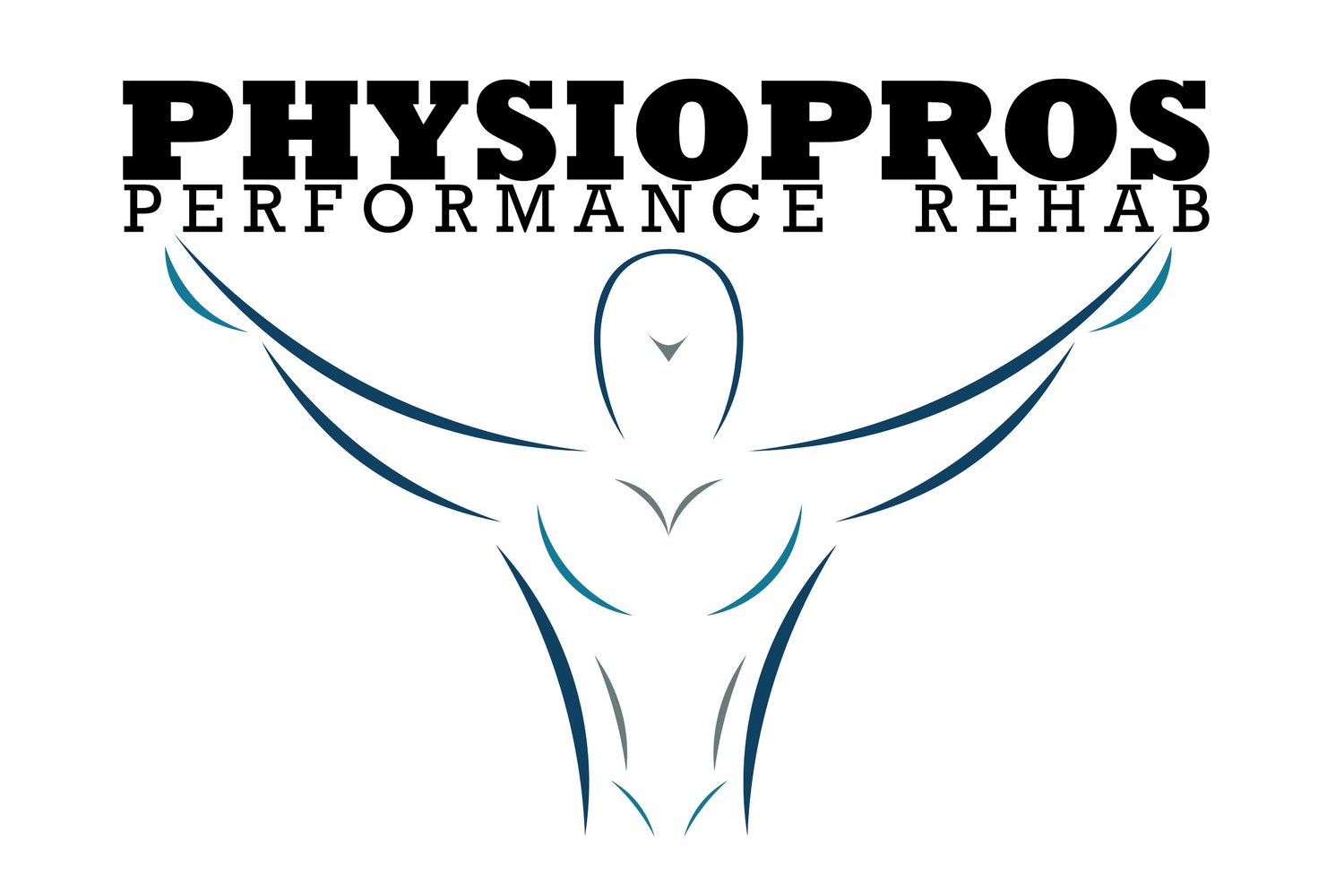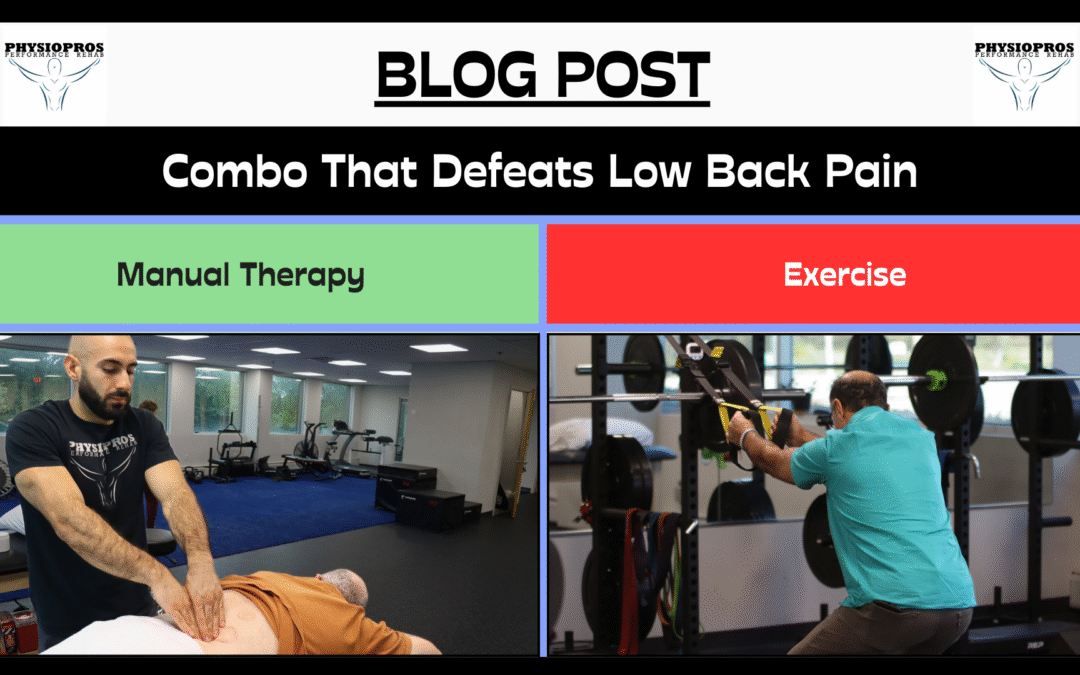Manual Therapy + Exercise: Combo That Defeats Low Back Pain
Tired of low back pain hijacking your day? You want real relief, not another quick fix. At Physiopros Performance Rehab in Parsippany, NJ, we take a practical, step-by-step approach that helps you move with confidence again. We listen first, then we test what matters, and finally we get to work, so you see progress you can feel in your daily life.
Here’s how we do it. We pair targeted exercise with hands-on care to calm irritation, restore motion, and build lasting strength. In a physical therapy session, we may use dry needling, cupping, soft tissue mobilization, manual therapy, joint manipulation, joint mobilization, IASTM, and more, always chosen for your goals and comfort. Then we coach you through simple moves you can repeat at home, because consistent practice locks in each gain. As a result, flare-ups shrink, everyday tasks feel easier, and walking, lifting, and sitting become more manageable. If low back pain has been holding you back, keep reading, this guide shows what to expect, offers easy starter steps, and explains when it’s time to get extra help.
Quick Take: Why This Combo Works
First, manual therapy calms things down. Gentle joint mobilization, soft tissue work, and other hands-on techniques reduce protective muscle guarding, restore motion, and dial down sensitivity. Then, targeted exercise locks the gains in. We build core endurance, hip strength, and movement control so your back tolerates more load with less irritation. As a result, you feel better now and stay better longer.
Here’s the simple formula we use in Parsippany, NJ: calm + strengthen = confidence. Manual therapy changes how your back feels today; exercise changes how your back handles tomorrow. Together, they cut flare-ups, improve posture and lifting mechanics, and make sitting, walking, and workouts more comfortable, even when low back pain has lingered.
In plain terms: hands-on care opens the door; smart training keeps it open. Next, we’ll spell out what counts as “manual therapy,” when each technique fits, and how we tailor the plan inside a physical therapy session.
What Counts as “Manual Therapy”?
Manual therapy is simply skilled, hands-on care that helps your back move and feel better so exercise can work faster. In a typical physical therapy session at Physiopros Performance Rehab in Parsippany, NJ, we may blend several techniques based on your goals and how your body responds.
Joint mobilization uses small, gentle glides to reduce stiffness and improve motion. Joint manipulation is a quick, precise movement sometimes followed by a “pop”, not required and only used when appropriate. Soft Tissue Mobilization applies focused pressure and stretch to ease tight or sensitive areas. IASTM uses smooth tools to guide that soft-tissue work. Cupping creates light suction to improve tissue glide and comfort. Dry Needling uses a thin, solid needle to calm trigger points and reduce protective guarding. Each option serves a purpose; none is a magic trick on its own.
What does it feel like? Expect comfortable pressure, small movements, and clear communication. Mild soreness afterward can happen, but you should feel freer, not flared. We always screen for safety, explain what we’re doing, and adjust in real time.
Most importantly, manual therapy sets the stage for change, less guarding, better motion, and fewer pain signals, so your targeted exercise can lock in the gains. Next, we’ll show why adding the right exercises multiplies those benefits.
Why Add Exercise? The Multiplier Effect
Manual therapy opens the door; exercise keeps it open. First, targeted movement boosts circulation and relaxes protective muscle guarding. Then, progressive loading retrains how your spine, hips, and core share the work. As a result, your back tolerates more activity with fewer flare-ups, and everyday tasks in Parsippany, NJ, like commuting, yard work, and workouts, feel easier.
We start with core endurance, not just “strong abs.” Think anti-rotation holds, carries, and breathing that teaches your ribs and pelvis to work together. Next, we build hip mobility and strength so your back doesn’t do the hips’ job. Finally, we groove essentials, hip hinge, squat, lunge, and carry, so lifting groceries or getting off the floor becomes automatic. Each exercise has a clear purpose: reduce sensitivity, improve control, and increase load tolerance for stubborn low back pain.
Dosage matters. Too little, and nothing changes; too much, and symptoms flare. That’s why we use simple progressions, time under tension, range, tempo, and load, so you improve week by week without guessing. We also anchor progress to what you care about: sitting longer without stiffness, walking farther, or returning to lifting.
Put simply, hands-on care helps you feel better now, while smart training helps you stay better longer. Up next, we’ll show quick self-checks to steer your routine in the right direction.
Is It Sciatica, Stiffness, or Sensitivity?
Before you try any self-checks, it helps to name the pattern you’re feeling. While this isn’t a diagnosis, recognizing common patterns can guide which movements help your low back settle down, especially here in New Jersey where daily sitting, commuting, and weekend projects can nudge symptoms in different ways.
Sciatica-like symptoms (nerve-dominant). You feel pain, tingling, or numbness that travels past the buttock, sometimes below the knee. Sitting and bending forward often ramp it up; short walks or gentle press-ups may calm it. We focus on reducing nerve sensitivity with hands-on care, then add trunk endurance, hip strength, and controlled mobility to keep relief.
Stiffness-dominant (facet/joint pattern). The ache stays mostly in the low back, often one side, and flares with arching, standing, or twisting. Bending forward a little or sitting tends to ease it. Here, joint mobilization/manipulation and soft tissue work restore motion, while hip flexor and posterior-chain drills plus hinge training make standing and lifting feel smoother.
Sensitivity-dominant (overprotective system). Symptoms seem to change day to day. Light pressure feels intense, stress or poor sleep turns the volume up, and you brace without realizing it. Gentle, graded exposure works best: breathing resets, isometrics, easy walks, and short sets that build confidence without spikes.
Self-Checks You Can Try at Home
Skip the guesswork and use these quick, non-diagnostic checks to steer your plan, then bring the notes to your visit in Parsippany, NJ.
Morning vs Evening Tolerance
Rate stiffness and ache right after waking and again after dinner (0–10). If mornings are tougher, start with gentler motions and a short walk; if evenings flare, reduce sitting blocks and add brief movement breaks.Sit-to-Stand x10
Time yourself standing up and sitting down ten times from a chair. Retest after two minutes of easy movement. Faster and smoother = you’re warming well; slower or sharper = scale back intensity next session.Five-Minute Walk Test
Walk at a comfortable pace. Note when symptoms appear, where you feel them (back vs leg), and how long relief lasts afterward. Next walk, adjust pace or distance to keep symptoms lower the next day.Direction Finder
If bending forward bothers you, test a few gentle back-bending reps; if arching back bothers you, test small forward-bending reps. Choose the direction that leaves you moving easier within 24 hours.Traffic Light System
Green: discomfort stays ≤3/10 and settles by next day, keep going.
Yellow: bumps to 4–5/10, cut reps or range.
Red: sharp, spreading, or numbness, stop and check in with a physical therapist.
These quick checks help you match the day’s plan to how your low back feels, so progress stays steady.
What a Visit Looks Like at Physiopros Performance Rehab
First, we listen. You’ll share your story, goals, and day-to-day limits, and we’ll screen for red flags. Then we test what matters: how you bend, stand, walk, and lift. We combine a clear movement screen with hands-on checks so we can explain, in plain English, what’s driving your low back pain and how we’ll tackle it.
Next, we get to work. A typical physical therapy session blends targeted exercise with the right dose of hands-on care. Depending on your needs, that may include Manual Therapy, Joint Mobilization or Manipulation, Soft Tissue Mobilization, IASTM, Cupping, or Dry Needling. We coach form, set pain rules, and build a simple home plan you can finish in minutes. You leave knowing exactly which moves to do, how much to do, and how to adjust if symptoms change. We also tweak everyday habits, how you sit, sleep, and lift, so relief sticks between visits.
Finally, we track progress with clear milestones:
1st. calm irritation, find positions of relief, and reduce guarding.
2nd. expand comfortable motion, improve walking or sitting tolerance, and build core endurance and hip strength.
3rd. groove hinge, squat, and carry patterns while shrinking flare frequency.
4th. re-test key measures (like sit-to-stand time or walking tolerance), review results, and decide the next step, progress, maintain, or discharge.
This steady, step-by-step plan helps you feel better now and stay better longer, right here in Parsippany, NJ.
If you are new around here and would like to schedule an appointment, click here: New Patient Center.

